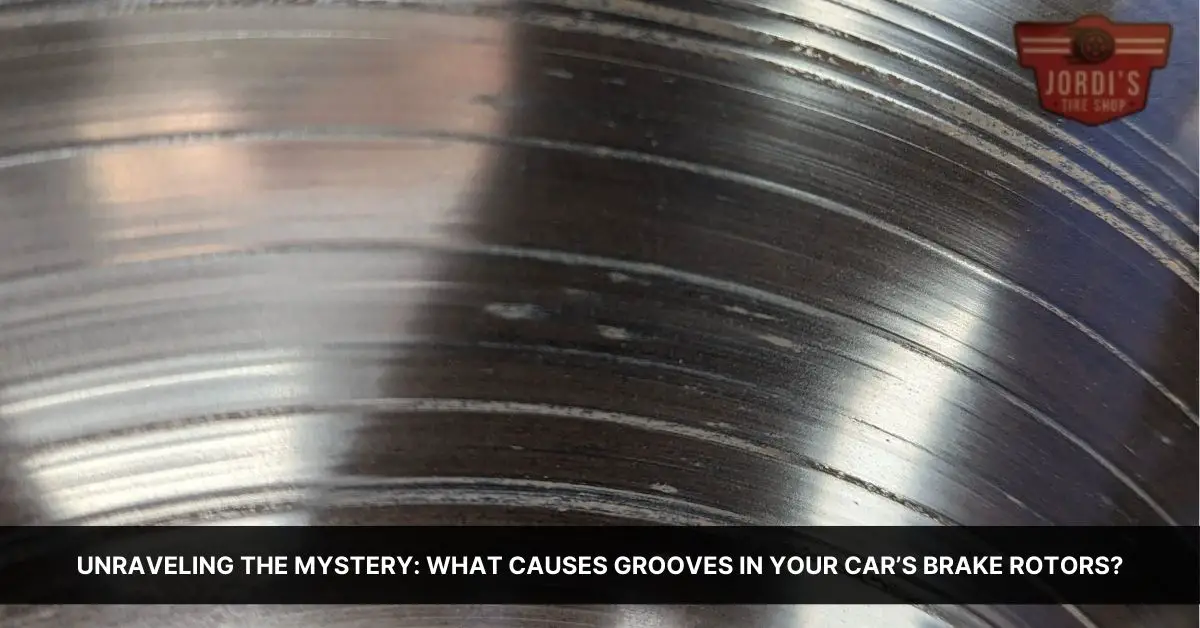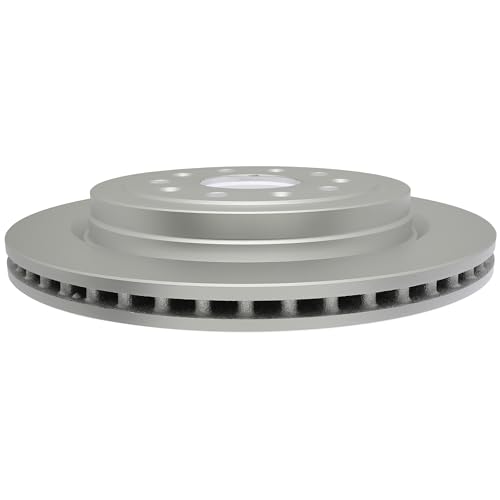Ever noticed a strange, grinding noise when you hit your car’s brakes? Chances are, you’re dealing with a case of grooved brake rotors. But what exactly causes these grooves to form in the first place? It’s a question that’s puzzled many drivers and car enthusiasts alike.
Understanding the root cause of grooves in brake rotors is more than just a search for knowledge. It’s about ensuring your car’s safety, performance, and longevity. So, buckle up as we investigate into the mechanics of brake rotors, and shed some light on this common automotive issue.
Understanding Brake Rotors
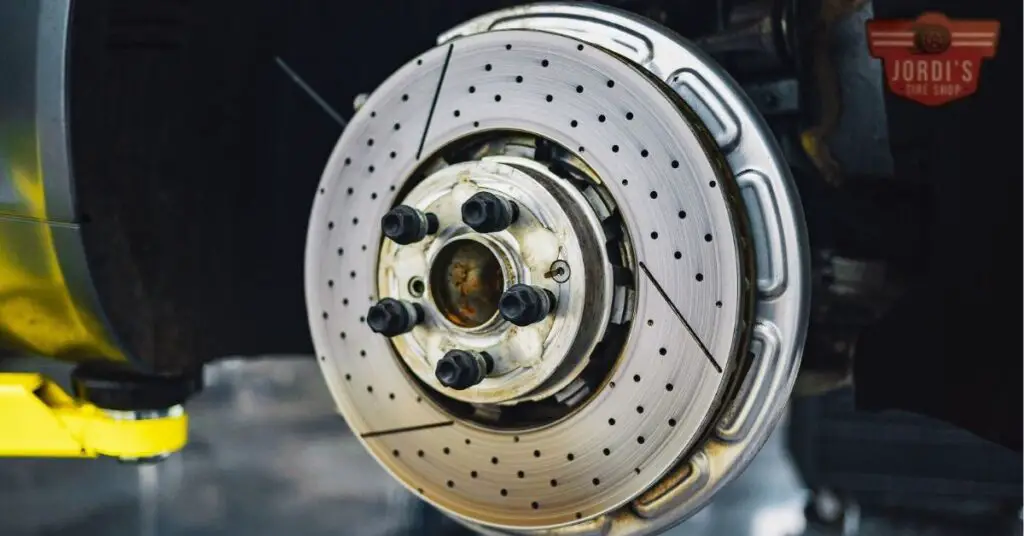
Gaining insights into brake rotors stands critical in comprehending the causes behind the grooving problem. This spans their role, material composition, and their immense impact on automotive performance.
Role of Brake Rotors
As a central component of your vehicle’s braking system, the brake rotor comes into play. It’s a disc connected to the wheel hub, absorbing the kinetic energy of a moving vehicle when you press the brake pedal. This energy turns into heat, slowing down and eventually halting the car. Hence, the efficiency of brake rotors plays a crucial part in the stopping power and overall safety of your vehicle.
Material and Composition of Brake Rotors
Further exploring into brake rotors, it’s crucial to acknowledge their composition. Brake rotors typically comprise cast iron as it efficiently absorbs and disperses heat. But, high-end performance cars might sport rotors made of material composites like carbon, ceramic or a mix of both. Each material presents its own strengths and weaknesses based on heat tolerance, weight, and cost. Nevertheless, regardless of materials, poor maintenance and adverse driving conditions can significantly contribute to the grooving issue, damaging the rotors over time.
Common Misconceptions about Brake Rotors
Eliminate the haze around the subject of brake rotors by addressing common misconceptions. Dispelling myths can lead to a more informed and accurate understanding of the region’s mechanics.
Misconception 1: All Brake Rotors are Identical
Brake rotors aren’t all created equal, contrary to popular belief. Variations exist in rotor construction based on vehicle requirements. As noted previously, while cast iron is the standard choice for most vehicles because of its effective heat absorption, high-performance vehicles favor advanced materials like carbon or ceramic due to their superior heat dissipation and lighter weight.
Misconception 2: More Grooves Mean Better Performance
Not always true is the thinking that more grooves result in higher performance. More grooves in a rotor’s structure may result in noise, vibration, premature wear, so raising safety concerns. A healthy brake rotor boasts a flat and smooth surface allowing efficient heat dissipation. Accumulated grooves serve as evidence of wearing or damage, not enhanced performance.
Misconception 3: Rotors Don’t Require Regular Maintenance
Speculations are rife that brake rotors resist demanding maintenance routines. Regular inspections and maintenance, but, prolong their lifespan and ensure a vehicle’s safe operation. Negligence accelerates the grooving issue over time, leading to rotor damage and demanding a full replacement in extreme cases.
Steer clear of these misconceptions and adopt healthy practices for the well-being of your braking system. This knowledge empowers you to make better decisions, promoting safer driving, and ensuring vehicle longevity.
What Causes Grooves in Brake Rotors
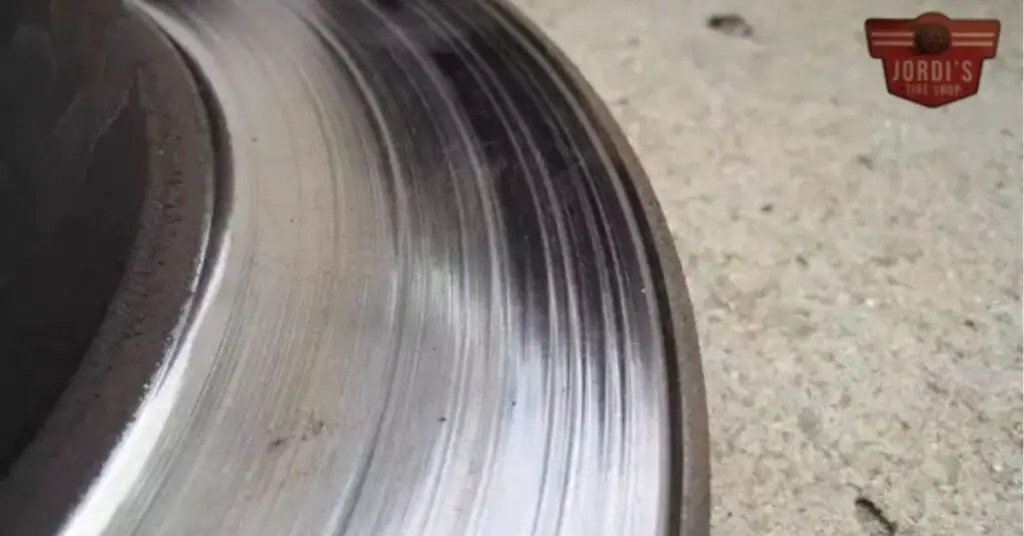
Let’s investigate into the primary factors contributing to the formation of grooves in brake rotors.
Impact of Debris and Dirt
Brake rotors, located as they are, encounter a important amount of debris and dirt. Small particles can stick to the brake pads, hardening over time. When the brake pedal’s pressed, the hardened particles come into contact with the rotor, causing scratches or grooves. If the rotors aren’t regularly cleaned, this damage can deepen, leading to important grooving over time. For example, a vehicle frequently driven on gravel roads might develop deeper grooves earlier than one primarily driven on well-paved streets.
Effect of Worn-out Brake Pads on Brake Rotors
Worn-out brake pads constitute another leading contributor to grooved rotors. When brake pads wear thin, the pad backing plate starts making contact with the rotor, leading to grooves formation. Brake pads tend to wear out faster in heavy braking conditions, such as city driving or towing heavy loads, hence regular monitoring and replacement are paramount. For instance, a vehicle hauling heavy loads might require brake pad replacements every 25,000 miles, while a car driven gently might go 50,000 miles before needing new pads.
Understanding Rust Formation in Brake Rotors
Finally, rust formation accelerates the grooving process in brake rotors. Rotors, often made of iron, are susceptible to rust in wet and damp conditions. This rust can cause pitting and, eventually, deep grooves. Regularly driving the vehicle helps scrape off the top layer of rust, preventing it from settling in and forming grooves. But, if a vehicle’s left stationary for extended periods, rust can build up significantly. For instance, a car driven every day would have less rust accumulation on its rotors than a car left unused in a damp garage for several weeks.
Identifying Grooves in Brake Rotors
Listen, take heed, and examine. These simple steps guide you in recognizing grooves in brake rotors. Investigate deeper to discern signs of wear and tear on brake rotors.
Grill or Growling Noise
Identifying grooves isn’t merely about visual scans, audible cues matter. A grill or growling noise surfaces when brakes contain grooves. This unsettling sound, akin to metal grating on metal, originates from the damaged rotors rubbing against the brake pads. Don’t mistake it for a mere automotive whimper, it’s an alert to worn-out brake rotors.
Vibration while Stopping
Brake rotors demand your tactile attention too. Vibration when stopping is a typical tell-tale sign. It’s because unevenly worn rotors disrupt brake pads’ smooth contact, leading to shaking or vibrating sensation in the steering wheel. Dismiss it not as a simple quirk in braking. It hints at grooved rotors, necessitating immediate attention.
Inspecting the Brake Rotors
Finally, visual inspection of brake rotors plays a pivotal role in identification. Look for deep scratches or grooves in the rotor’s surface. These imperfections disturb the rotor’s flat surface and hinder its capacity to dissipate heat efficiently, compromising your vehicle’s safety. A prudent visual check paves the road to timely intervention and prolonged rotor life.
Prevention and Maintenance
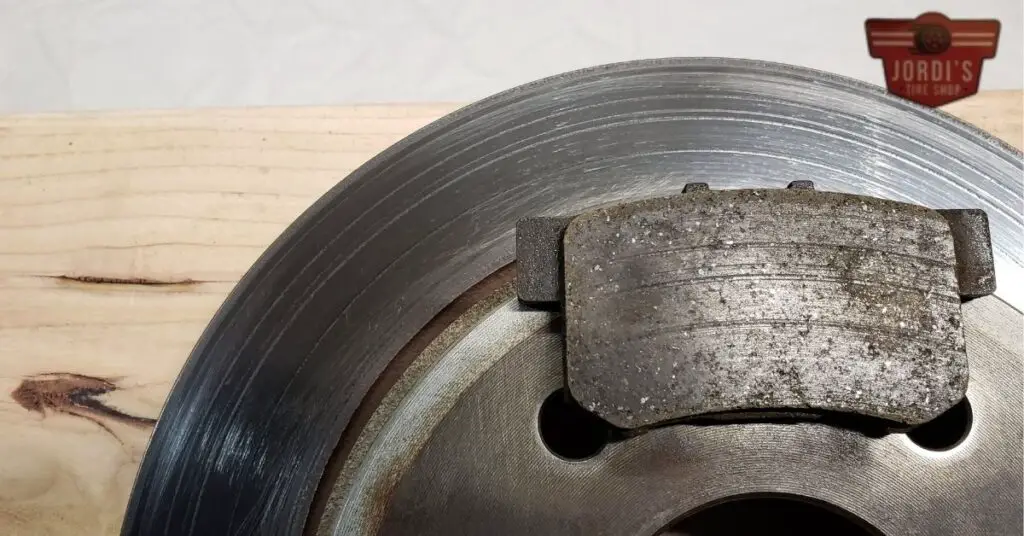
Given an understanding of grooved brake rotors and why they occur, proactive steps towards prevention and regular maintenance become indispensable strategies. Here, the significance of customary automobile check-ups, timely brake pad substitutions, and deterrence of corrosion and rust are meticulously detailed.
Importance of Regular Car Check-up
Regular car check-ups, a cornerstone of preventive maintenance, speak volumes about your vehicle’s health. These routine inspections can significantly help minimize rotor damage caused by grooving. Firstly, a mechanic has instruments to measure rotor thickness, identifying even microgrooves which, if unchecked, can deepen over time. Secondly, recurring check-ups allow for the timely detection of irregularities, like uneven brake pad wear or trapped debris, both potential perpetrators of grooving. Hence, it’s prudent to include brake system inspections in your car’s regular maintenance schedule.
Replacing the Brake Pads in a Timely Manner
Brake pads, pivotal to the braking system, demand regular replacement. Depleted brake pads can rub against the rotor, causing grooves. Notably, some brake pads possess a built-in ‘wear indicator’ which emits a high-pitched squealing sound when pad replacement is due, serving as a handy reminder for maintenance. Failing to heed this indicator can result in the backing plate of the pads etching grooves into the rotor, a situation best avoided through timely replacement.
Preventing Rust and Corrosion
For brake rotors, rust and corrosion pose a important risk. As mentioned earlier, brake rotors, particularly those made from cast iron, are prone to rust formation, especially when the vehicle is parked in damp conditions for prolonged periods. This rust can embed itself into the brake pads and then scratch the rotors, causing grooves. Prevention strategies include frequent driving to keep the rotor surface clean, avoiding long-term parking in moisture-rich environments, and seeking professional advice on rust inhibiting treatments. By keeping rust and corrosion at bay, you substantially lessen the chances of rotor grooving.
Risks Associated with Grooved Brake Rotors
Grooved brake rotors pose undeniable risks, impacting not only your vehicle’s performance, but its overall safety as well.
Impact on Car’s Stopping Capability
Grooves in brake rotors implicate the effectiveness of your car’s stopping capability. Sufficient friction between the brake pads and the rotor surface is essential for creating the necessary force to slow and stop your vehicle. In the presence of grooves, this friction decreases, resulting in reduced stopping power. You might notice your car takes a significantly longer distance to come to a complete halt. There’s also the threat of heat build-up in excessively grooved rotors. As the rotor’s surface area for heat dissipation decreases, your car faces the risk of overheating and brake failure.
Damage to Other Car Parts
Damage from grooved brake rotors isn’t limited to the braking system alone. Over time, these grooves can lead to uneven wear on brake pads, forcing them to develop parallel grooves. This worsens the braking conditions, escalating the damage to other component parts. Your car’s rotors, brake calipers, and brake pads are built to work as a cohesive unit. Grooved rotors disrupt this synergy, causing excessive wear on calipers as they struggle to clamp down on uneven rotor surfaces, it’s possible this will result in premature caliper failure. Using deteriorating brake parts also puts undue stress on your vehicle’s suspension system and tires, reducing their lifespan. Hence, treating grooved brake rotors as an isolated issue ignores the potential cumulative damage to your car.
Repairing and Replacing Grooved Brake Rotors
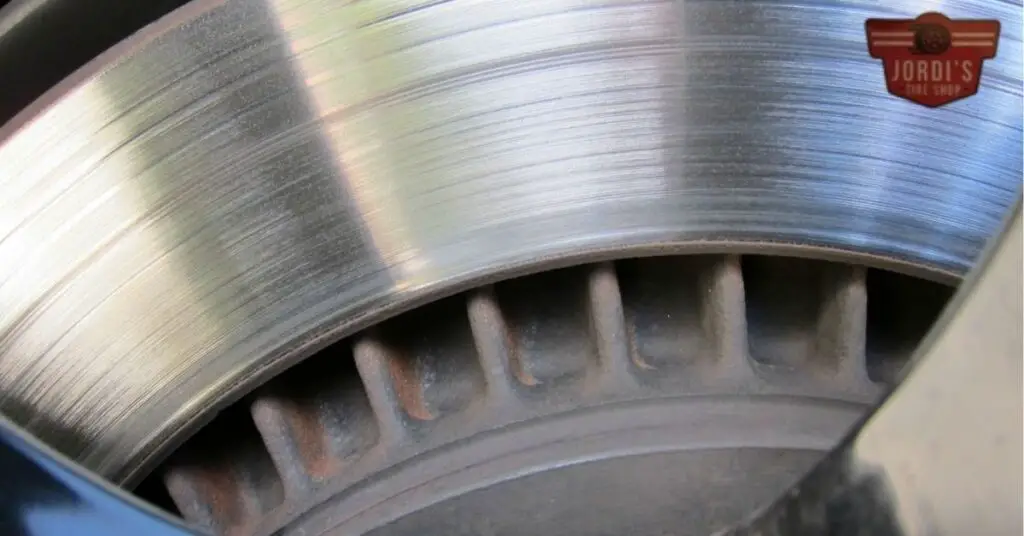
After understanding grooved brake rotors’ reasons and consequences, it’s time to focus on their repair and replacement. Recognize that handling this task yourself can prove complex, particularly if you lack experience. In such cases, professional assistance proves invaluable.
Repairing minor grooves on rotor surfaces can be an option, provided they are not too deep. Generally, rotors get machined during brake service, a process also known as ‘turning’ the rotors. The turning process essentially involves skimming off a thin layer from the rotor’s surface, eliminating minor grooves, and creating a smoother surface for the brake pads to act upon. But, recognize the fact that this can be performed only a limited number of times, provided the rotor remains above the manufacturer’s minimum thickness post-machining.
When it comes to excessively grooved brake rotors, replacement proves the best alternative. Grooves deeper than 1.5mm, or rotors that have thinned beyond the manufacturer’s minimum specifications, necessitate replacement. It’s crucial to replace both rotors on the same axle simultaneously, ensuring an even distribution of braking force. If only one rotor gets replaced, it could result in unstable stopping or pulls to one side during braking.
When installing new rotors, it’s important to remember a few key pointers. Ensure the rotors are clean and free of oil or dirt. Handling them with gloved hands also proves good practice, preventing spontaneous rusting due to direct skin contact. Also, opting for high-quality brake pads can protect the rotors from future deep grooving, adding to the longevity of your braking system.
Finally, adopting regular maintenance routines and timely inspections dramatically reduces the chances of grooving on brake rotors. This preventive approach not only saves costs associated with repairs and replacements but also contributes significantly to vehicle safety and performance.
Incorporate these practices in your schedule and watch the lifespan of your brake rotors increase, resulting in safer and more efficient operation of your vehicle.
Conclusion
So, you’ve now got the lowdown on grooved brake rotors. It’s clear that they’re not just a nuisance, but a serious issue that can impact your vehicle’s performance and safety. From debris and worn-out brake pads to rust and neglect, various factors contribute to this problem. But remember, it’s not all doom and gloom. By keeping an ear out for unusual sounds, feeling for vibrations, and conducting regular visual inspections, you can catch the issue early. Regular maintenance, including timely brake pad replacements and avoiding long-term parking in damp conditions, can significantly reduce the risk of rotor grooving. And when it comes to repair or replacement, don’t cut corners. Whether you’re turning the rotors or installing new ones, quality and consistency are key. With this knowledge, you’re well-equipped to tackle grooved brake rotors head-on, ensuring your vehicle’s longevity and your safety on the road.
Related Posts:
- Exposed Cords on Tires: How Long Can They Last Before Replacement?
- Mastering the Art of Driving: Unraveling the Meaning of ‘Depress Brake Pedal’
- Solving the Mystery: Why Are Your Car’s Driver Information Center Buttons Not Working?
- Decoding Harley Davidson Dash Warning Lights: A Complete Guide for Safe Rides
- Unveiling the Mystery: Understanding Your Kioti Tractor Warning Lights
- Decoding Forklift Warning Light Symbols: A Comprehensive Guide to Ensuring Warehouse Safety
- Deciphering Hamm Roller Warning Lights: Your Guide to Safe & Efficient Operation
- Unlocking the Power of Jeep Compass Screen Lines: A Comprehensive Guide
- Steer Clear: Discover the Troublesome 7.3 Powerstroke Years to Avoid
- Unraveling the Mystery: What Causes Grooves in Your Car’s Brake Rotors?

